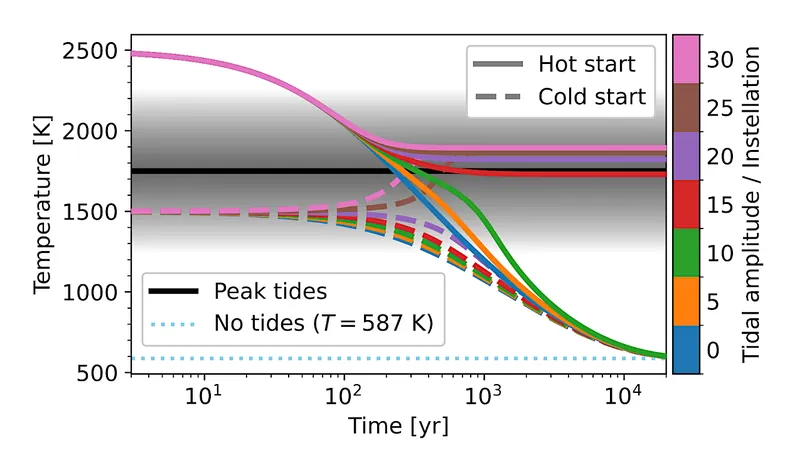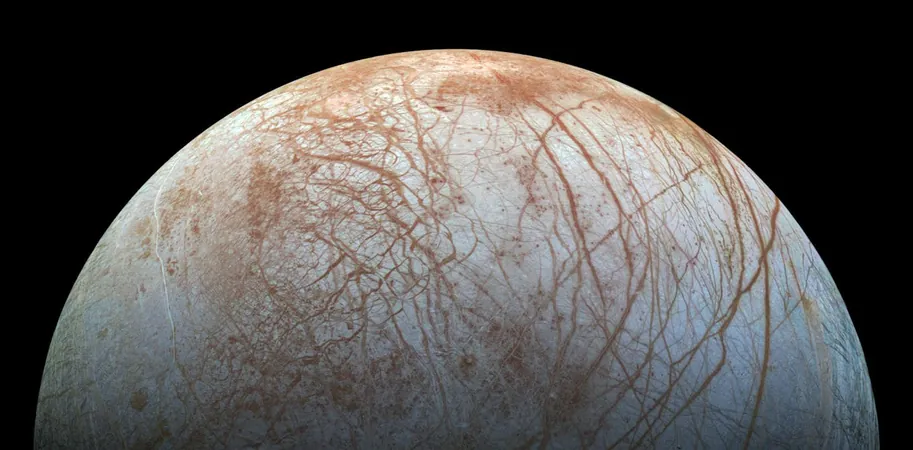
Unlocking the Secrets of Tidal Heating on Exoplanets: The Case of L 98-59
2025-05-14
Author: Mei
Revolutionary Findings on Tidal Heating in Rocky Exoplanets
Recent studies into the L 98-59 planetary system have unveiled ground-breaking insights into the effects of tidal heating on rocky exoplanets. Positioned in close orbits, these planets experience significant internal heating, reshaping our understanding of their atmospheres and geology.
Tidal Heating: A Lifeline for Atmospheres?
Tidal heating stands as a crucial energy source capable of sustaining mantle melting and atmospheric outgassing on rocky planets orbiting active M-dwarfs. Researchers initiated a detailed simulation of the early evolution of L 98-59 b, c, and d using a cutting-edge framework that integrates tidal heating with redox-controlled outgassing.
Introducing the 'Radiation-Tide-Rheology Feedback'
One of the most captivating results from these simulations is the discovery of a self-limiting mechanism, dubbed the 'radiation-tide-rheology feedback.' This innovative concept balances radiative cooling and tidal heating effects, leading to tidal heating estimates that are remarkably lower—by up to two orders of magnitude—than earlier predictions. Nonetheless, these reduced estimates still allow for primordial magma oceans to persist for billions of years.
Implications for Molten Worlds in the L 98-59 System
The orbit and stellar conditions of L 98-59 b suggest it remains molten to this day, possibly without an atmosphere. For planets c and d, sustaining a long-lived magma ocean requires not just tidal forces but also atmospheric regulation of energy transport to keep the molten state.
A New Era in Exoplanet Research
These findings not only challenge previous assumptions but also establish a robust method for examining a planet's initial conditions, atmospheric makeup, and internal structure. The revelations from the L 98-59 system mark a significant leap in our quest to understand the environments of distant worlds and the possibility of life beyond our own solar system.
Academic Contributions and Future Directions
With this research making waves in the astrobiology community, scientists like Harrison Nicholls, Claire Marie Guimond, and others are at the forefront, pushing the boundaries of Earth and planetary astrophysics. As studies continue, we eagerly anticipate more revelations about the intriguing dynamics governing these distant realms.






 Brasil (PT)
Brasil (PT)
 Canada (EN)
Canada (EN)
 Chile (ES)
Chile (ES)
 Česko (CS)
Česko (CS)
 대한민국 (KO)
대한민국 (KO)
 España (ES)
España (ES)
 France (FR)
France (FR)
 Hong Kong (EN)
Hong Kong (EN)
 Italia (IT)
Italia (IT)
 日本 (JA)
日本 (JA)
 Magyarország (HU)
Magyarország (HU)
 Norge (NO)
Norge (NO)
 Polska (PL)
Polska (PL)
 Schweiz (DE)
Schweiz (DE)
 Singapore (EN)
Singapore (EN)
 Sverige (SV)
Sverige (SV)
 Suomi (FI)
Suomi (FI)
 Türkiye (TR)
Türkiye (TR)
 الإمارات العربية المتحدة (AR)
الإمارات العربية المتحدة (AR)